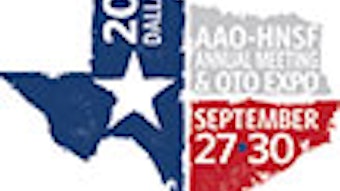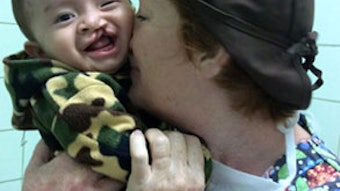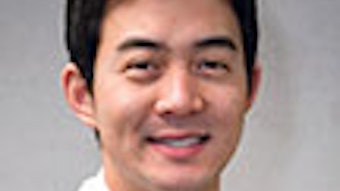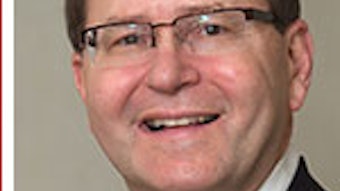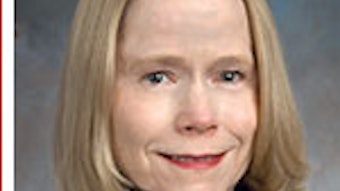One humanitarian mission: two perspectives Expanded from the print edition
Since 2009, several otolaryngology-head and neck surgery trips have been organized to Eldoret, Kenya. The trips are part of an overarching program, the Indiana University-Kenya AMPATH Partnership (ampathkenya.org). Months of planning in both the United States and Kenya culminate in an intense two-week “ENT Camp,” which provides medical and surgical care, training, and relationship building between the U.S. and Kenyan otolaryngologists.
Introduction
By Susan Cordes, MD
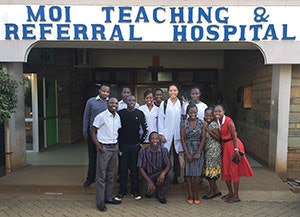 Authors report on their experiences at the Indiana University-Kenya AMPATH Partnership “ENT Camp” at the Moi Teaching and Referring Hospital in Eldoret, Kenya.
Authors report on their experiences at the Indiana University-Kenya AMPATH Partnership “ENT Camp” at the Moi Teaching and Referring Hospital in Eldoret, Kenya.Since 2009, several otolaryngology-head and neck surgery trips have been organized to Eldoret, Kenya. The trips are part of an overarching program, the Indiana University-Kenya AMPATH Partnership (ampathkenya.org). Months of planning in both the United States and Kenya culminate in an intense two-week “ENT Camp,” which provides medical and surgical care, training, and relationship building between the U.S. and Kenyan otolaryngologists. Many residents have participated in these missions, however, this year was unique with two otolaryngology residents from different training programs, different levels of training, and different objectives. The following essays are their reflections on the 2015 Kenya ENT Surgery Camp.
Dream Fulfilled and a Promising Future
By Kia Renee Jones, MD, PGY-5, Indiana University School of Medicine
This was by far one of the most gratifying experiences I have had as a physician and burgeoning surgeon. It was my first trip to the African continent and my second experience on a medical mission. My expectations were far exceeded. Our group was able to clinically evaluate approximately 100 patients who had been prescreened for head and neck surgical and oncological disease. We ultimately performed 49 surgical procedures in addition to the preoperative work-up and postoperative care. My personal preparation for the trip, however, started months before my departure.
As a resident at Indiana University, I had a goal to participate in the IU-Kenya program prior to the end of my training. There is a legacy of humanitarian effort and global health initiatives at the Indiana University School of Medicine and the Department of Otolaryngology that predates the start of my post-graduate training. I wanted to be a part of that legacy and contribute to the success of the program in whichever ways I could. I began to collect supplies and equipment for our trip, and I helped with the packing and transporting of those supplies to Eldoret. I prepared six one-hour lectures to deliver to the medical students in training at the Moi University School of Medicine. I was committed prior to my arrival.
Throughout my time in Eldoret, I was privileged to see a number of patients in the otolaryngology clinic and prepare them for surgery, operate alongside Drs. Campbell, Cordes, and Jafari, Ngoitsi, Sisenda and Menach (otolaryngologists at MTRH), teach, learn, provide postsurgical care, and contribute to the ongoing success of the IU-Kenya AMPATH Otolaryngology program.
I also had the most fulfilling experience engaging with the medical students at MTRH.My prepared lectures served as the foundation of a growing relationship. The students asked a multitude of interesting questions during our sessions and began to open up, becoming more involved in the clinical and surgical care of the patients as a part of their otolaryngology rotation and as active participants in the ENT camp. I was proud. On the last operative day of ENT camp, I was captivated by the testimonies of these students as they each thanked me for my effort and enthusiasm in an unprecedented going-away celebration planned for me! It was overwhelming.
Overall, this was a truly remarkable and humbling experience, a concrete example of humanitarian medicine at its best. It outlined, for me, the potential for MTRH to become a self-sustaining center for the treatment of patients with otolaryngic disease and my potential to impact the care of patients on a more far-reaching scale.
I would like to thank Susan R. Cordes, MD, and Drs. Campbell, Jafari, Kathi, and Diana, Ngoitsi, Menach, and Sisenda, the OR, clinic and ward staff at MTRH and the IU-Kenya program for facilitating this unforgettable experience. I look forward to my next opportunity to participate in a humanitarian medical mission and to serve the international community.
Personal Reflection and Long-Term Impact
By Aria Jafari MD, PGY-2, University of California, San Diego
I recently had the opportunity to join Susan R. Cordes, MD, and a team of U.S. physicians and nurses for a two-week humanitarian surgical mission to the Moi Teaching and Referral Hospital (MTRH) in Eldoret, Kenya. My experience represents the most rewarding and formative time I have had as an otolaryngologist-in-training.
About 10 years ago, as a bright-eyed and bushy-tailed undergraduate, I embarked on a journey to the Costa Rican rainforest for a research/study abroad program. I had no idea that this experience would change my perspective on science, health disparities, and social justice and also leave a permanent impression on my personal and professional life.
Since then, I finished medical school and began otolaryngology-head and neck surgery residency at the University of California, San Diego (UCSD). With surgical internship under my belt and a basic understanding of otolaryngology, I again felt the urge to give back. I was ultimately connected with Dr. Cordes, and in the subsequent months, anticipation mounted for what would be my first experience abroad as a “real doctor.”
After a sleepless night on-call, I zoomed to the San Diego International Airport. About 30-hours later, I stepped onto the warm tarmac at Jomo Kenyatta International Airport in Nairobi. The next morning, I took a small airplane to Eldoret, about a one-hour flight, and arrived to the IU-House where I would meet the team for the first time. We were soon off to our first day in the clinic.
The hallways outside of the MTRH ENT clinic were jam-packed with patients. Many had been waiting months and travelled long distances to be seen. I grabbed a chart, and before I could make sense of the scattered handwritten notes, a patient emerged through the crowd and sat before me. The chief complaint was readily apparent. He had a massive right submandibular gland tumor. After exhausting the few Kiswahili words I know, I placed the chart down, examined him, and discussed surgery.
Although unfamiliar and challenging, seeing patients and performing surgeries in this context was simple in purpose. Freed from the typical distractions as a resident, each case was an opportunity for reflection. It was in Eldoret that I realized I had chosen the right field, one that has a profound effect on humanistic qualities such as identity, the senses, and ability to breathe, swallow, and speak (to name a few).
During my time, I also performed a chart review of surgical outcomes and explored the feasibility of establishing a newborn hearing-screening program in an effort to leave a lasting impact on the community. Through interactions and meetings with Kenyan physician leaders, I learned valuable lessons on how to effectively develop long-term programs in the humanitarian context.
I returned to the U.S. with a renewed sense of purpose, commitment, and understanding of patients from a variety of backgrounds. Integrating this into patient care has proven incredibly valuable. I look forward to a continuing relationship with the IU/MTRH partnership, and I am thankful to the UCSD/Division of Oto-HNS for supporting this enriching experience. Asante sana (thank you)!





